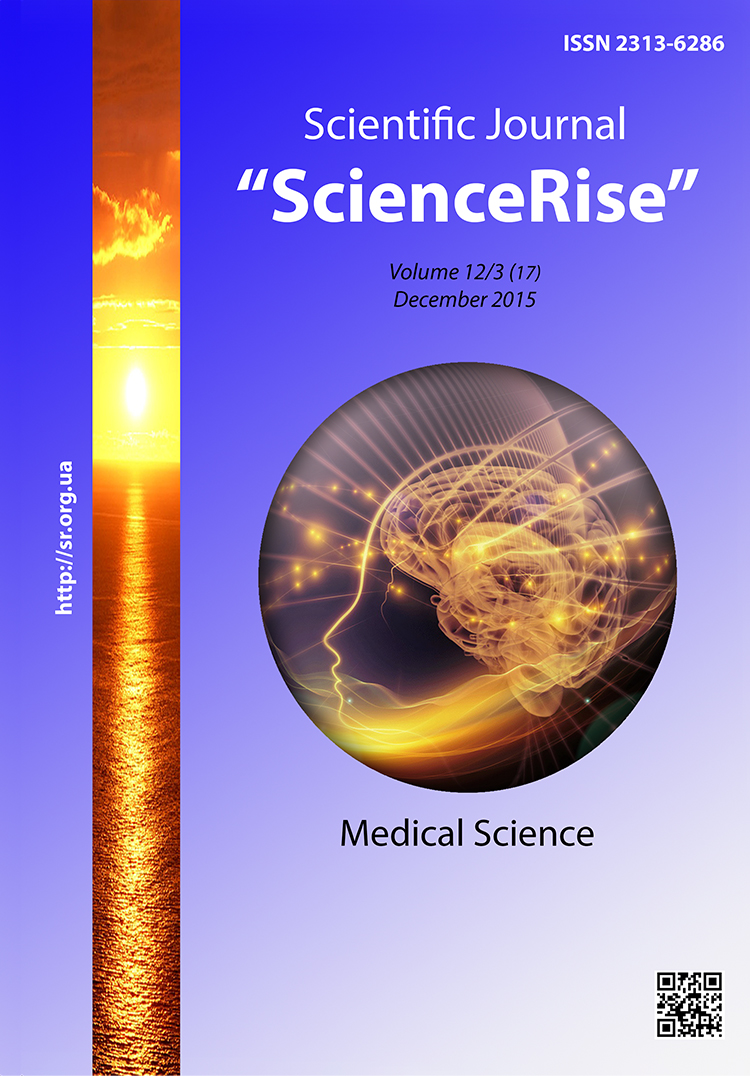Рівень Toll-подібних рецепторів (TLR-4) в плазмі - маркер гіпералгезії в ранньому післяопераційному періоді
DOI:
https://doi.org/10.15587/2313-8416.2015.57080Słowa kluczowe:
гіпералгезія, толл-подібні рецептори, післяопераційний період, дітиAbstrakt
Відомо, що при активації TLR4 моноцитів/макрофагів, окрім прозапальних цитокінів, виникає вихід опіоїдних пептидів з останніх. В статі показано що у 24 дітей прооперованих с приводу пухлин черевної порожнини використання високих доз фентанілу для знеболення в ранньому післяопераційному періоді може призводити до гіпералгезії. Гіпералгезія в ранньому післяопераційному періоді репрезентувалася підвищенням TLR4
Bibliografia
Abaturov, A. E., Volosovets, A. P., Yulish, E. I. (2012). The role of Toll-like receptors in recognize pathogen-associated molecular patterns of infectious pathogens and the development of inflammations. Part 4: The intracellular signaling pathways TLR. Child Health, 8 (43), 163–167.
Abaturov, A. E., Volosovets, A. P., Yulish, E. I. (2012). The role of Toll-like receptors in recognize pathogen-associated molecular patterns of infectious pathogens and the development of inflammations. Part 1: Family TLR. Child Health, 5 (40), 116–121.
Abaturov, A. E., Volosovets, A. P., Yulish, E. I. (2012). The role of Toll-like receptors in recognize pathogen-associated molecular patterns of infectious pathogens and the development of inflammations. Part 2. Ligands TLR. Child Health, 6 (41), 213–219.
Abaturov, A. E., Volosovets, A. P., Yulish, E. I. (2012). The role of Toll-like receptors in r recognize pathogen-associated molecular patterns of infectious pathogens and the development of inflammations. Part 3 Rekognitsiya ligands TLR. Child Health, 7 (42), 157–164.
Sauer, R.-S., Hackel, D., Morschel, L., Sahlbach, H., Wang, Y., Mousa, S. A. et. al. (2014). Toll like receptor (TLR)-4 as a regulator of peripheral endogenous opioid-mediated analgesia in inflammation. Mol Pain, 10 (10), 1–15. doi: 10.1186/1744-8069-10-10
Liu, T., Gao, Y.-J., Ji, R.-R. (2012). Emerging role of Toll-like receptors in the control of pain and itch. Neuroscience Bulletin, 28 (2), 131–144. doi: 10.1007/s12264-012-1219-5
Kuchin, Y. L., Glumcher, F. S., Belka, K. Y. (2012). Opіoid-induced hypealgesia during analgosedation in patients with cerebral injure. Bіl, znebolyuvannya that іntensivna terapіya, 1D, 254–257.
Kuchin, Y. L. (2013). Stress-іnduced hyperalgesia in patіens with cerebral injure. Bіl, znebolyuvannya that іntensivna terapіya, 2 (D), 262–266.
Angst, M. S., Clark, J. D. (2006). Opioid-induced Hyperalgesia. Anesthesiology, 104 (3), 570–587. doi: 10.1097/00000542-200603000-00025
Celerier, E., Gonzalez, J. R., Maldonado, R. et. al. (2006). Opioid-induced hyperalgesia in a murine model of postoperative pain: role of nitric oxide generated from the inducible nitric oxide synthase. Anesthesiology, 104 (3), 546–555. doi: 10.1097/00000542-200603000-00023
##submission.downloads##
Opublikowane
Numer
Dział
Licencja
Copyright (c) 2015 Дмитро Валерійович Дмитрієв, Юрій Юрійович Кобеляцький

Utwór dostępny jest na licencji Creative Commons Uznanie autorstwa 4.0 Międzynarodowe.
Our journal abides by the Creative Commons CC BY copyright rights and permissions for open access journals.
Authors, who are published in this journal, agree to the following conditions:
1. The authors reserve the right to authorship of the work and pass the first publication right of this work to the journal under the terms of a Creative Commons CC BY, which allows others to freely distribute the published research with the obligatory reference to the authors of the original work and the first publication of the work in this journal.
2. The authors have the right to conclude separate supplement agreements that relate to non-exclusive work distribution in the form in which it has been published by the journal (for example, to upload the work to the online storage of the journal or publish it as part of a monograph), provided that the reference to the first publication of the work in this journal is included.

